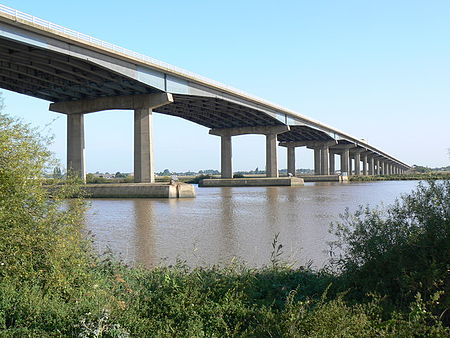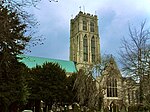Ouse Bridge (M62)
1976 establishments in EnglandBridges across the River Ouse, YorkshireBridges completed in 1976Bridges in the East Riding of YorkshireConcrete bridges in England ... and 6 more
GooleM62 motorwayMotorway bridges in EnglandPlate girder bridgesRoad bridges in EnglandUse British English from December 2016

The Ouse Bridge is a reinforced concrete plate girder bridge that spans River Ouse between Goole and Howden in the East Riding of Yorkshire, England. It carries the M62 and is situated between junctions 36 and 37. It was built between 1973 and 1976 by Costain and was designed by Scott Wilson Kirkpatrick & Partners. The bridge was officially opened to traffic on 24 May 1976 by nine-year-old Martin Brigham.
Excerpt from the Wikipedia article Ouse Bridge (M62) (License: CC BY-SA 3.0, Authors, Images).Ouse Bridge (M62)
M62,
Geographical coordinates (GPS) Address External links Nearby Places Show on map
Geographical coordinates (GPS)
| Latitude | Longitude |
|---|---|
| N 53.727 ° | E -0.879 ° |
Address
Ouse Bridge
M62
DN14 7DR
England, United Kingdom
Open on Google Maps











